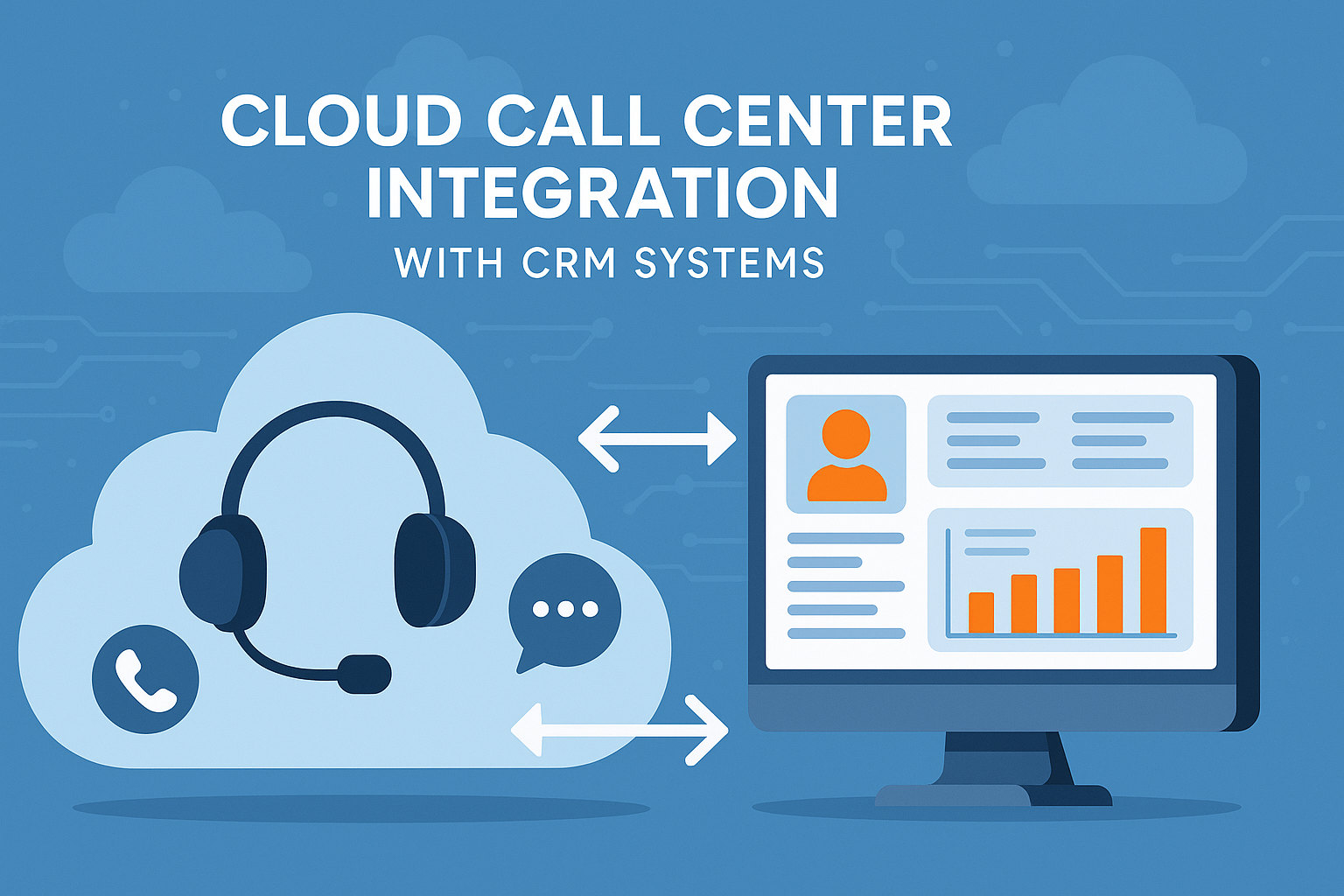November 5, 2024
Cloud Call Center Integration with Customer Relationship Management (CRM) Systems
Cloud Call Center Integration with CRM Systems (Customer Relationship Management)

There is often confusion between the Call Center System and the Customer Relationship Management (CRM) System, as each plays a distinct role in supporting a company’s internal operations.
Some businesses heavily rely on a Call Center System to communicate with customers anytime and anywhere. In contrast, others depend on the intelligent capabilities of CRM systems to enhance customer relationship management, understand customer needs, and resolve issues. In some cases, companies may need to utilize both systems together to achieve better integration in communication and customer service operations.
Regardless of the company’s size or the services it offers—whether it’s a small startup or a large enterprise—modern communication systems have become essential for continuous and efficient engagement with all types of customers, whether they are potential, existing, or loyal clients. These systems not only assist in problem-solving but also help in meeting customer needs, enhancing satisfaction and fostering brand loyalty.
What is the difference between a Call Center System and a CRM System?
What is a Call Center System?
A Call Center System is a technical platform used to manage and coordinate communication processes within companies. It connects customers with support or sales teams via phone calls. This system aims to improve the company’s communication with its customers by efficiently handling inquiries, complaints, or requests.
Components of a Call Center System:
- Communication Lines: Allow for receiving customer calls, whether local or international.
- Call Management Software: Automatically routes calls to the appropriate department or agent.
- Call Recording: Enables call recording for future review or to improve service quality.
- Performance Reports: Provides insights into call volume, wait times, and customer satisfaction levels.
- Integration with Other Systems: Can be integrated with CRM systems to track all customer interactions and enhance their experience.
Benefits of a Call Center System:
- Enhanced Customer Service: Facilitates quick resolution of customer issues and inquiries.
- Increased Productivity: Automates call routing, reducing downtime and maximizing efficiency.
- Scalability: Can handle a large volume of calls without compromising service quality.
- Multi-channel Support: In addition to phone calls, the system can support other communication channels like email and live chat.
What is a CRM System?
A Customer Relationship Management (CRM) System is a technology solution that helps companies manage and organize their interactions with current and potential customers. The system is designed to enhance customer relationships and improve the customer experience by providing comprehensive information, enabling companies to meet customer needs more efficiently and effectively.
Components of a CRM System:
- Data Management: Enables businesses to gather and store all customer-related information, including personal data, purchase history, preferences, and interaction records.
- Process Automation: Automates routine tasks such as sending marketing emails, scheduling appointments, and continuously following up with customers.
- Customer Analytics: Provides accurate reports on marketing campaign performance and customer behavior, helping businesses refine their strategies.
- Integration with Other Systems: Can be integrated with email systems, call centers, and sales tools, allowing businesses to track all customer interactions in one place.
Benefits of a CRM System:
- Improved Customer Experience: Tracks and understands customer needs, providing personalized services that meet their expectations.
- Increased Customer Loyalty: Offers a comprehensive view of the customer’s history and interactions, enabling better service and loyalty strategies.
- Enhanced Sales: Helps track sales opportunities and provides data-driven recommendations based on customer behavior and purchasing patterns.
- Automated Marketing: Supports marketing efforts by sending targeted messages to the right audience based on the data collected by the system.
- Time and Effort Savings: Reduces manual work and streamlines customer relationship management by automating processes and integrating with other systems.
Difference Between Call Center Systems and CRM Systems:
- Call Center System:
- Purpose: Used to facilitate telephone-based communication between the company and its customers.
- Primary Function: Manages incoming and outgoing calls, routes them to the appropriate departments, and records them for review and analysis.
- Usage: Primarily aims to provide a quick communication channel with current or potential customers, especially in support, customer service, or sales departments.
- Focus: Focuses on real-time communication and immediate problem resolution through phone calls.
- Technologies: May include tools like automatic call routing (IVR), call recording, and performance analytics for contact centers.
- CRM System:
- Purpose: Used to manage all aspects of the customer relationship across all channels.
- Primary Function: Tracks customer information such as contact details, purchase history, previous interactions, and business opportunities. It allows companies to have a comprehensive view of the customer journey and analyze their preferences and behavior.
- Usage: Used to manage long-term customer engagement, including sales, marketing, and post-sale support.
- Focus: Focuses on building sustainable relationships with customers by offering personalized solutions based on available data to enhance the customer experience and increase loyalty.
- Technologies: Includes technologies for data analysis, marketing automation, and managing interactions across multiple channels such as email, phone calls, and social media.
Integration Between Call Center and CRM Systems:
The integration between a Call Center System and a CRM offers an optimal solution for improving the customer experience and enhancing internal operational efficiency. This integration allows companies to leverage the benefits of both systems and deliver high-quality services to their clients. Here’s how the integration works and the benefits it brings:
- Unified Information in One Place:
- How It Works: When the Call Center System is integrated with CRM, all phone calls are linked to the customer database in the CRM. This enables call center agents to instantly access customer information such as call history, previous requests, preferences, and resolved issues.
- Benefit: Streamlined access to information makes it easier to provide personalized and fast service without needing to ask the customer for details repeatedly.
- Better Customer Journey Tracking:
- How It Works: By merging the data collected in the Call Center with CRM, companies can fully track the customer’s journey. Every phone call or interaction is added to the customer’s comprehensive record in CRM.
- Benefit: This integration gives teams a complete view of the customer’s interactions, helping to provide more personalized experiences and predict future customer needs.
- Improved Work Efficiency:
- How It Works: Both systems can work together to enhance employee efficiency by providing automation tools, such as call routing based on the information available in CRM or sending automated follow-up messages after calls.
- Benefit: Reduces manual efforts and increases the speed of team responses, contributing to shorter wait times and improved customer experiences.
- Comprehensive Performance Analysis:
- How It Works: The integration of Call Center and CRM systems gathers critical data on employee performance and service quality, including call duration, wait times, and issue resolution rates. This data is analyzed within the CRM to generate comprehensive performance reports.
- Benefit: Allows for identifying strengths and weaknesses in customer service and provides recommendations for improving performance and increasing customer satisfaction.
- Increased Sales and Customer Retention Opportunities:
- How It Works: By integrating the information from the Call Center and CRM, companies can identify cross-selling opportunities or service upgrades based on previous customer interactions and preferences. It also makes it easier to follow up with customers through automated reminders or personalized offers.
- Benefit: Helps companies retain customers and increase each customer’s lifetime value by offering additional services that meet their needs.
- Enhanced Complaint Management and Issue Resolution:
- How It Works: When a complaint or issue is registered through the Call Center, it is automatically directed to the support team or another department via CRM, with complete information about the customer and the problem.
- Benefit: Speeds up the problem-solving process and provides a seamless and connected customer service experience without repetitive data entry.
شاركه الان :
Do you have any questions?
- 920029985
- sales@arqaam.sa





